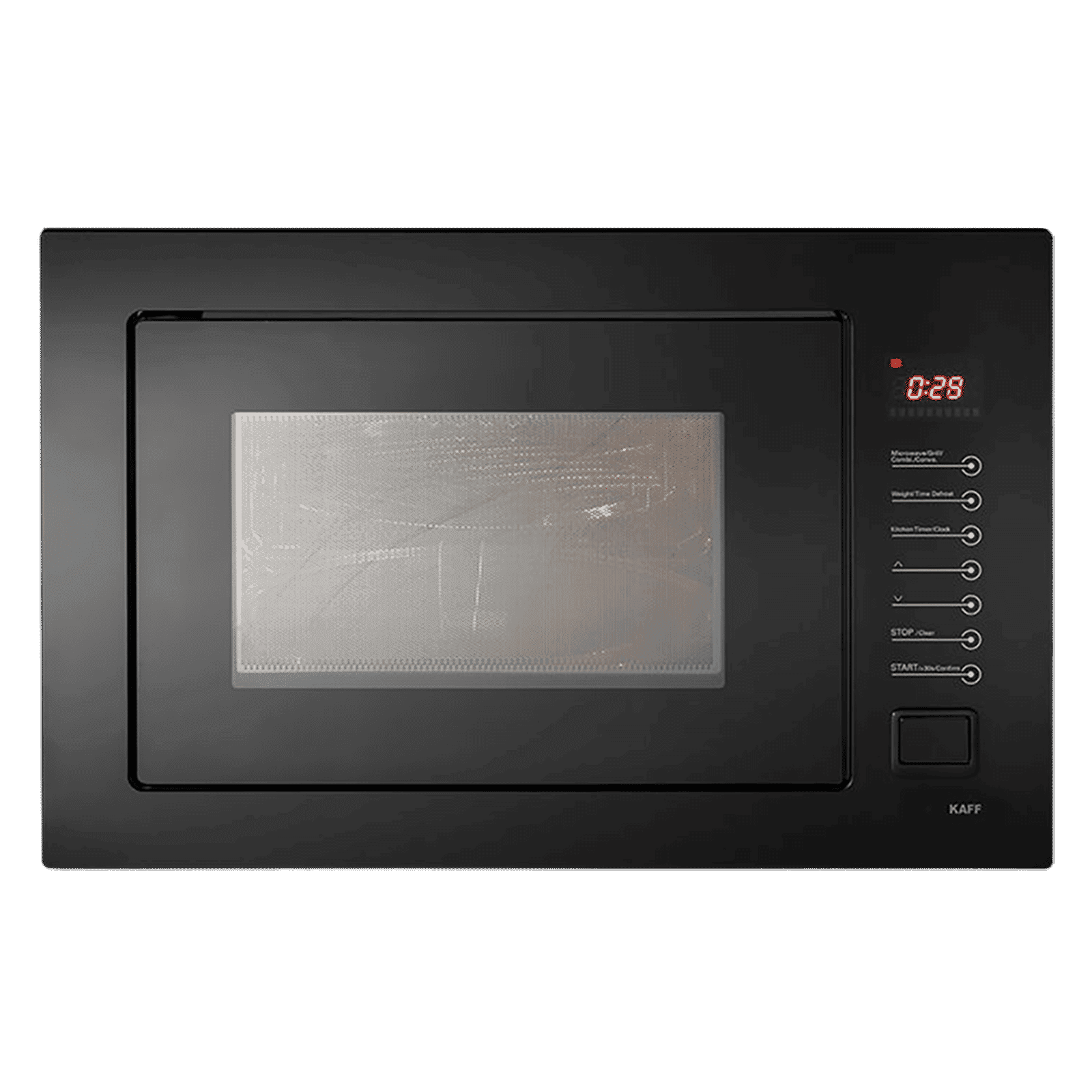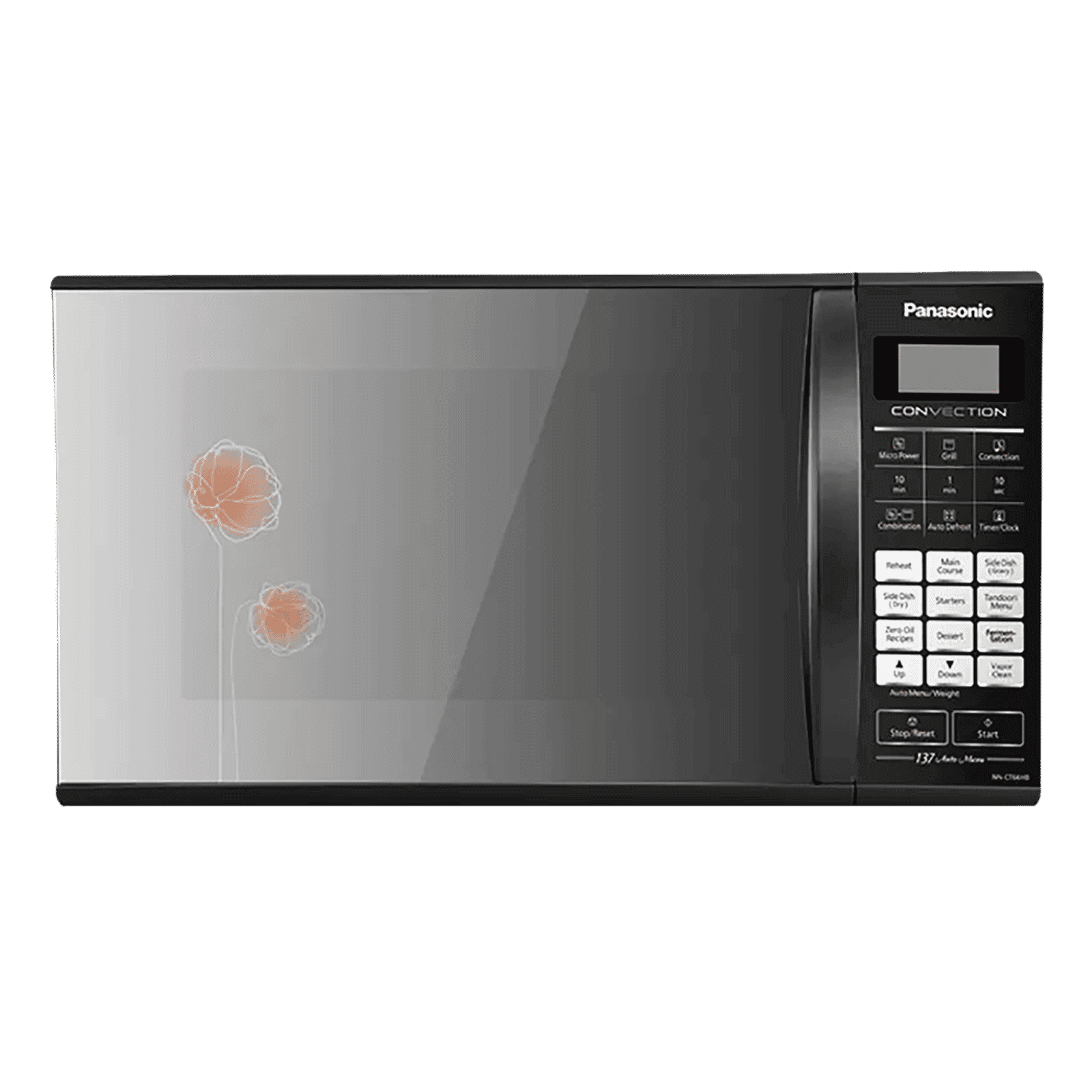
Home Appliances
•04 min read

Buy KAFF KMW8A 25L 60cm Built-in Microwave with Multi Programming Mode (KMW8A-BLK, Black) online at best prices from Croma. Check product details, reviews & more. Shop now!
Understanding the microwave size in mm is essential for anyone planning a kitchen layout or searching for the perfect appliance that fits snugly into your space. With various models on the market, knowing the precise measurements in millimetres can help simplify your appliance selection, whether you're looking for a standard unit for a family kitchen or a compact option for a smaller area.
Precise measurements are key to achieving a seamless integration with your kitchen cabinetry and countertops. Knowing the height, width, and depth of a microwave in mm ensures that it fits perfectly in the allocated space without any adjustment issues. This is especially relevant in today’s trend towards compact living spaces where precision is paramount.
The distinction between standard microwave dimensions and compact microwave measurements lies in their size and functionality. Standard models typically offer larger capacities and are suitable for family kitchens and larger cooking needs, while compact options are a great match for small kitchens, dorms, or offices. Understanding these differences will enable you to choose the right appliance that meets both spatial constraints and your cooking requirements.
Standard models usually range between 500-600 mm in width, 300-400 mm in height, and 400-500 mm in depth. These dimensions make them well-suited for households with larger cooking demands, ensuring that there is enough space to accommodate multi-functional cooking, reheating, and defrosting activities.
Compact units, on the other hand, typically measure between 400-500 mm in width, 250-350 mm in height, and 300-400 mm in depth. These small microwave sizes are ideal for those with limited countertop space, students living in dormitories, or professionals looking for efficiency in a smaller area. Their reduced size does not necessarily mean a compromise on functionality, making them a popular choice in modern kitchens.

Buy IFB 30FRC2 30L Convection Microwave Oven with 101 Autocook Menus (Black Floral) online at best prices from Croma. Check product details, reviews & more. Shop now!
Height is one of the vital parameters when it comes to integrating a microwave into your kitchen. Standard models may offer heights that support a built-in or countertop format, whereas compact options are designed to fit within confined areas without overwhelming the space. Typically, expect heights to vary between 300-400 mm for standard units and 250-350 mm for compact ones.
The width of a microwave in mm is critical for ensuring it fits neatly into cabinetry or on the countertop. Standard microwave dimensions usually offer more generous widths, ranging around 500 to 600 mm, whereas compact models are closer to 400-500 mm. These specifications help in planning a kitchen layout that avoids awkward gaps or cumbersome overhangs.
Depth is equally important in determining the usability and function of the microwave. A deeper appliance might offer more internal capacity, but it is crucial to balance it against your kitchen's space limitations. Standard units may have depths between 400-500 mm, while compact ones are designed within the range of 300-400 mm, optimising space without compromising on essential features.
Countertop microwaves are popular for their flexibility and portability. Their dimensions tend to mirror the standard sizes, which provide sufficient capacity for everyday cooking needs, without the requirement for permanent installation. This makes them a favourite among users who value convenience and efficiency.
Built-in microwaves are designed to fit seamlessly within kitchen cabinetry. Their dimensions are carefully planned not only for aesthetics but also to ensure proper ventilation and safe operation. Typically, these models require professional installation and measure within the standard ranges, ensuring they complement your kitchen's design whilst maintaining functionality.
Over-the-range microwaves combine the function of cooking with an in-built ventilation system. Their dimensions tend to align with standard models to provide enough space for both cooking and venting. This dual functionality requires a well-thought-out design that considers both aesthetics and practicality, making them a valuable addition in kitchens with limited countertop space.
Did You Know?
Microwave dimensions can vary by region! For instance, standard models in one area can be larger than compact ones popular in another. Always double-check measurements in millimetres for precision, whether buying locally or importing. This simple step could save you from potential fitting issues and ensure your appliance is the perfect addition to your kitchen.

Buy Panasonic 27L Convection Microwave Oven with 137 Autocook Menus (NN-CT66HBFDG, Black) online at best prices from Croma. Check product details, reviews & more. Shop now!
A comparison chart can be an effective tool to summarise the differences between standard microwave dimensions and compact microwave measurements. Here is a quick overview:
Type | Width (mm) | Height (mm) | Depth (mm) |
|---|---|---|---|
Standard (Countertop/Built-In) | 500-600 | 300-400 | 400-500 |
Compact | 400-500 | 250-350 | 300-400 |
Over-the-Range | 500-600 | 300-400 | 400-500 |
Measuring the interior microwave dimensions accurately is just as critical as the external ones – especially to determine cooking capacity measured in litres or cubic feet. Open the unit carefully and measure the cavity’s width, height, and depth. This helps you decide if a microwave meets your specific cooking needs or space constraints.
Microwaves typically range from 400-600 mm in width, 250-400 mm in height, and 300-500 mm in depth, depending on the type and size.
The interior cavity of a standard microwave usually ranges from 20-30 litres, which translates to approximately 300-400 mm in width, height, and depth.
A 1.2 cubic foot microwave typically measures around 500-600 mm in width, 300-400 mm in height, and 400-500 mm in depth.
In conclusion, understanding the precise microwave size in mm is fundamental to achieving a harmonious kitchen design. Whether you are eyeing a standard appliance for a spacious kitchen or a compact model ideal for smaller setups, this guide offers clear insights into the key measurements — height, width, and depth. By knowing these dimensions, you can make well-informed decisions that align with your lifestyle and spatial requirements. As you plan your kitchen upgrade or new purchase, consider these factors to incorporate an appliance that brings both functionality and aesthetic appeal into your home. This thoughtful approach ensures that your choices serve your practical needs while also complementing the overall design of your space.